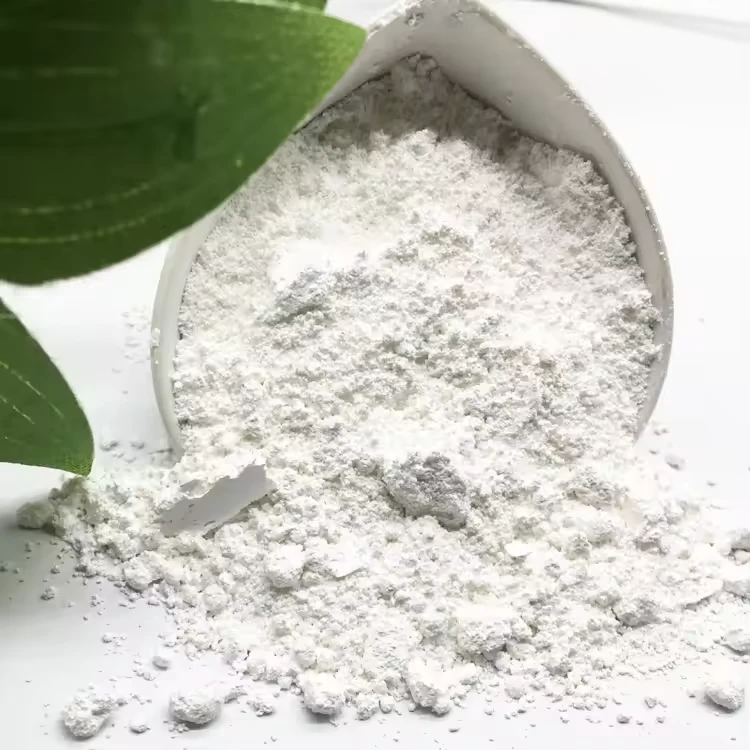
Dez . 11, 2024 10:48 Back to list
Exploring the Toxicity and Safety of Titanium Dioxide in Industrial Manufacturing Processes
Understanding LD50 of Titanium Dioxide in Factories A Comprehensive Overview
Titanium dioxide (TiO2) is one of the most widely used white pigments in various industries, particularly in the production of paints, coatings, plastics, and cosmetics. However, as with many chemicals, understanding its toxicity and potential health risks is crucial, especially in the manufacturing environment. One key measure in toxicology is the lethal dose (LD50), which represents the dose required to kill 50% of a test population. In this article, we will delve into the implications of LD50 values for titanium dioxide in factories, focusing on its toxicity, occupational exposure, and safety measures.
The Basics of Titanium Dioxide
Titanium dioxide is celebrated for its excellent whiteness, brightness, and opacity. It is predominantly used in paint formulations, where it provides not only color but also durability and UV protection. Beyond paints, titanium dioxide finds applications in food coloring, sunscreens, and even as a photocatalyst in environmental technologies. However, its ubiquitous use heightens the need to consider its safety profile.
Toxicity and LD50 of Titanium Dioxide
The LD50 value is a critical indicator in toxicology used to gauge the potential harmful effects of a substance. For titanium dioxide, the oral LD50 in rats is documented to be greater than 10,000 mg/kg, suggesting a relatively low acute toxicity. This value indicates that titanium dioxide is not acutely lethal in small amounts, and it implies that the risk of immediate death from ingestion is low.
However, the route of exposure can influence the potential effects. While ingestion presents lower risks, inhalation is a significant concern, particularly in factories where TiO2 is produced or utilized. Studies have shown that repeated exposure to TiO2 dust can lead to respiratory issues and other chronic health problems. This emphasizes the importance of considering not just the LD50, but also the chronic exposure risks associated with inhaling titanium dioxide particles.
Occupational Exposure and Safety Measures
In industrial settings, workers are often exposed to titanium dioxide in its powder form. Prolonged inhalation of titanium dioxide can potentially lead to a condition known as pneumoconiosis, resembling black lung disease. As such, factories must adhere to stringent safety guidelines to minimize health risks.
Regulatory Standards
ld50 titanium dioxide factories

Regulations regarding titanium dioxide are set forth by various health and safety organizations globally. For instance, the Occupational Safety and Health Administration (OSHA) in the United States has established permissible exposure limits (PEL) for airborne concentrations of titanium dioxide. Employing engineering controls, such as proper ventilation and dust collection systems, can significantly reduce inhalation risks. Moreover, personal protective equipment (PPE), including respirators and dust masks, is crucial in ensuring worker safety.
Best Practices in Factory Settings
Factories utilizing titanium dioxide must implement several best practices to protect workers. These include
1. Regular Training Workers should be trained on the properties of titanium dioxide, the potential risks of exposure, and proper handling techniques.
2. Monitoring Air Quality Conducting regular air quality assessments can help identify harmful dust levels and ensure compliance with regulatory standards.
3. Implementing Safety Protocols Establishing thorough safety protocols and emergency response plans can mitigate risks associated with accidental spills or exposure.
4. Medical Surveillance Regular health check-ups for workers exposed to titanium dioxide can help in the early detection of respiratory issues or other health impacts.
Conclusion
Titanium dioxide is an invaluable material across various industries, offering numerous benefits. However, its use in factories necessitates a careful assessment of its toxicity profile, particularly regarding LD50 values and chronic exposure risks. By adhering to safety regulations and implementing best practices, industry stakeholders can effectively manage these risks, ensuring a safer working environment for all employees. Continuous research and monitoring around the health impacts of titanium dioxide will remain essential in balancing its industrial benefits with the health and safety of workers. As we advance, it is crucial to stay informed and proactive about the substances we work with to foster a safe and productive workplace.
-
China Lithopone in China Supplier – High Quality Lithopone ZnS 30% Powder for Wholesale
NewsJun.10,2025
-
Top China Titanium Dioxide Company – Premium TiO2 Powder Supplier & Manufacturer
NewsJun.10,2025
-
Fast Shipping 99% Pure TiO2 Powder CAS 13463-67-7 Bulk Wholesale
NewsJun.10,2025
-
Top China Titanium Dioxide Manufacturers High-Purity R996 & Anatase
NewsJun.10,2025
-
Lithopone MSDS Factories - Production & Quotes
NewsJun.10,2025
-
High-Quality Titanium Dioxide in Water Suppliers - China Expertise 60
NewsJun.09,2025
